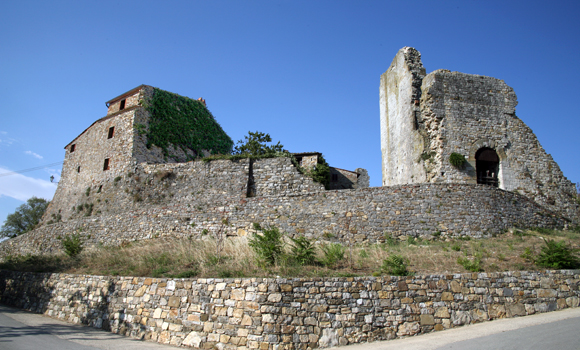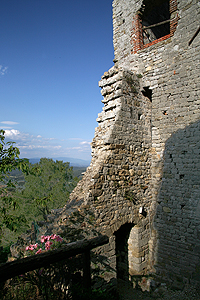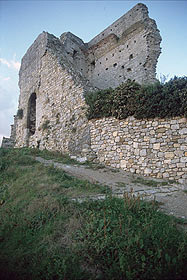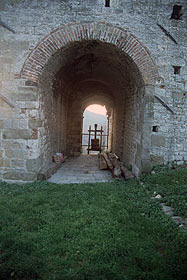Cennina Castle
 |
Cennina can be reached from Florence following the Motorway A1 up to the exit ' Valdarno'. From Montevarchi following the indications for Bucine and, passed the country, those for Siena along the SS540. After around two kilometers we find on the right the road, signalled, for Cennina.
» More Photos
» Where is Cennina Located
 |
| The Postern. |
The castle was built in 1167 by the count Brandaglia
Alberigo d' Uguccione to whose family belonged during all the 12th
century, although the zone resulted under the control of the counts of
the Guidi family, and subsequently the castle changed several feudal
owner: Cennina was occupied by the Tarlati, Ubertini and the counts Guidi
themselves.
The Valdambra, of which Cennina was the most important and strategical
settlement, was at the borders between the territories of Florence, Arezzo
and Siena, and the castle was besieged, destroyed and reconstructed many
times, always involved in the wars between the Guelphs Florence and the
Ghibellines Siena and Arezzo. In the 1307 Cennina was damaged by
the Senese army, allied with the Black Guelphs of Florence that were
in war against the White Guelphs allied with the Ghibellines of Arezzo.
 |
 |
| The Keep and the Main gate | |
In 1360, after alternate circumstances, Cennina become part of the Florentine territory, that established here its strengthened outpost to control the valley. After almost one century, in 1447, Cennina suffered a terrible siege from the Aragonesi army, allied with Siena. Despite the hard resistance the castle was conquered, but after only fifteen days it was regained and strengthened.
The last military occupation of the castle happened in 1529, by the army of the prince of Orange on the road through the Valdambra to Florence .
The original perimeter of the courtain walls is still well visible: on the side of north-east they are practically intact, to southwest we can notice the collapsed angle tower, now abandoned on the ground. From its ruins we can deduce that it was square and open on the side facing the courtyard, as the oriental tower of the near Rocca of Civitella in Val of Chiana.
| More Photos |
| Back to Homepage |
| Back to Castles Index |